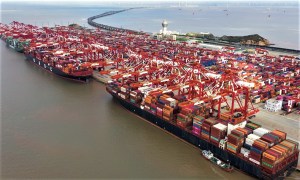
This past February I ordered an 18,000 BTU window air conditioning unit through the local GE dealer in the town where I live. It’s the largest such window unit you can buy, and there aren’t very many alternative options available from competitors.
Not surprisingly, the particular unit I ordered is manufactured in China (I am not aware of any similar models that are made in the United States). At the time I placed my order, I was informed that due to COVID-related disruptions of global deliveries, the earliest I could expect my unit to be received and installed was in April.
I wasn’t very surprised at this news, and figured that the delay would be perfectly fine for getting the AC unit installed and working in our home before the onset of the notoriously hot and humid summer months where we live here on Maryland’s Eastern Shore.
Since then, we’ve had several more pushbacks in the anticipated product delivery – first June … then August. And now the latest schedule I’m being told is for an October delivery – and even that date is “iffy.”
I think my situation isn’t unusual in these COVID-crazy times. Considering that the pandemic began towards the end of 2020, we are now 20 months later and the ripple effects are still being felt all throughout the global movement of products.
In fact, the recent coronavirus outbreaks that have occurred in Chinese port cities just this past month have caused even greater shipping delays than what had been encountered during 2020; they’re actually the worst shipping delays seen in 20 years. It means that the impacts will likely be felt all the way to the holiday shopping season at the end of this year — at a minimum.
As a related consequence of the COVID pandemic, the demand for shipping containers and shipping boxes has never been higher, even as some containers have been marooned on ships attempting to travel through the Suez Canal (which was shut down for a period of weeks earlier this year) as well as bottlenecks in certain port cities where labor shortages have been particularly acute.
Among the myriad of products and supplies that have been seriously affected are:
- Appliances
- Batteries
- Food products
- Furniture
- Hospital, dental and surgical equipment/supplies
- Measuring instruments
- Plastic materials
- Printed circuit boards
- Semiconductor processing equipment
… and these are just some of the most notable examples.
With the Delta variant apparently causing a COVID-pandemic redux, it’s pretty impossible to gauge just how long it will take to work through the product shortages that have with us for so long already.
But what’s quite clear is that all of the initial estimates were woefully off the mark … so why would we expect anything different now?
What sort of product shortages have you experienced in the past few months, “thanks” to COVID – either in your business or at home? Please share your experiences (surprisingly good or unsurprisingly bad) with other readers here.


